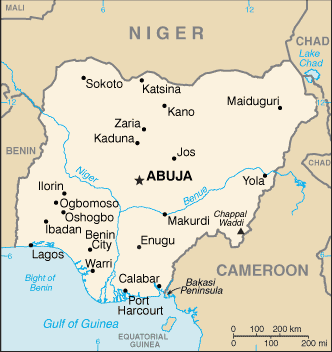US officials have repeatedly made a point to emphasize the “threat” posed by Nigerian militant outfit Boko Haram to American interests. It is unsurprising, as Nigeria is one of America’s largest suppliers of oil and the campaign against the faction has turned much of the nation’s northeast into a no-go area.
 To that end US officials have pledged major support for the Nigerian government, with the belief that their usual anti-terror policy of large scale military operations against the affected regions will provide a solution. Always unspoken, of course, is that this strategy doesn’t seem to be working for the US anywhere else.
To that end US officials have pledged major support for the Nigerian government, with the belief that their usual anti-terror policy of large scale military operations against the affected regions will provide a solution. Always unspoken, of course, is that this strategy doesn’t seem to be working for the US anywhere else.
But Boko Haram is interesting not so much for what it is — another militant faction using the the same strategy of violence against rivals and suicide bombings — but for what Boko Haram was: a mostly irrelevant Luddite sect.
The group’s name, Boko Haram, is a combination of the Hausa word “Boko” meaning Western education, and the Arabic word “haram” used to refer to religiously forbidden or sinful things, usually seen in the context of Muslim dietary laws. The group was founded in 2002 by Mohammed Yusuf, a Western educated cleric, and was virtually unknown for several years.
Yusuf’s faction was reportedly something of a laughingstock early on, with some claiming that Boko Haram was originally a term of ridicule for the group’s backwards belief system. In an interview with the BBC, Yusuf claimed that the idea that the Earth was round was “heretical” and also mocked the idea that rain was the result of condensation, insisting that it was clearly a miracle instead.
The group’s membership also eschewed firearms for the most part, arming themselves with bows and arrows and machetes on the grounds that there was no mention of guns in the Qu’ran.
But in early 2009 the group began to attract attentions amid claims that they were responsible for several violent killings, particularly targeting people who refused to convert to Islam.
Instead of treating this as a law enforcement matter, the Nigerian government sent in the military, announced their intention to “wipe out” the faction, and shelled their mosque before pursuing the survivors.
The operation ended in a massacre, with a large number of Boko Haram members tossed into mass graves. Yusuf was arrested and then died under “mysterious circumstances” hours later when he was shot repeatedly while in military custody.
The Nigerian government instantly declared the operation a military victory (and certainly a decisive case for machine guns over shortbows). Unsurprisingly, it was not the end of the situation.
With Yusuf dead and much of their group massacred in the streets, Boko Haram did not simply fade away but rather changed its tactics dramatically. The group abandoned its aversion to modern weaponry and armed itself with the usual tools of the trade, machine guns and suicide vests.
Now instead of the occasional beheading in Maiduguri, the Nigerian government is coping with major bombings on a fairly regular basis. Last week Nigerian President Goodluck Jonathan reported that Boko Haram is believed to have infiltrated most of the government and the military, and that the threat is even greater than the ugly late 1960’s Biafran War, which killed millions.
For US officials, this is just one more opportunity to throw massive amounts of arms at the Nigerian military and turn them loose. Yet Boko Haram’s current status is a clear reflection of what a disastrous policy that has been, and history certainly does not favor the notion that a sufficiently bloody military response will solve the problem.


